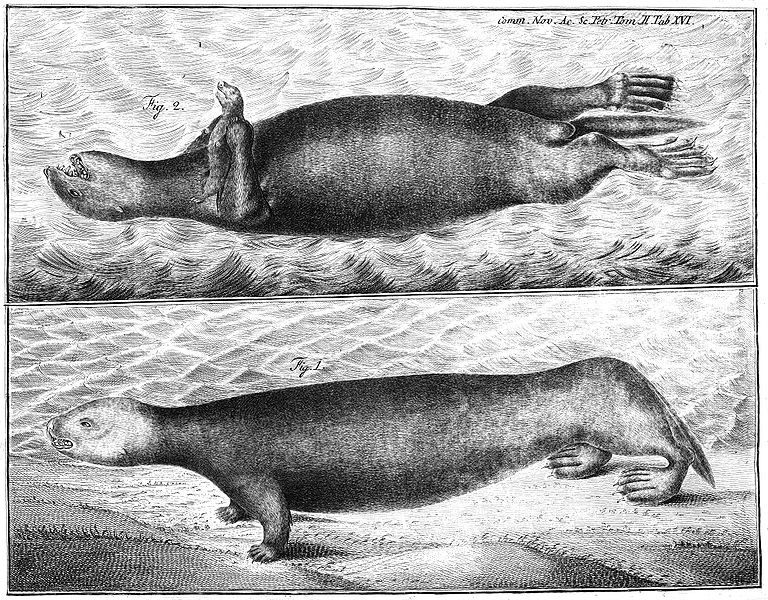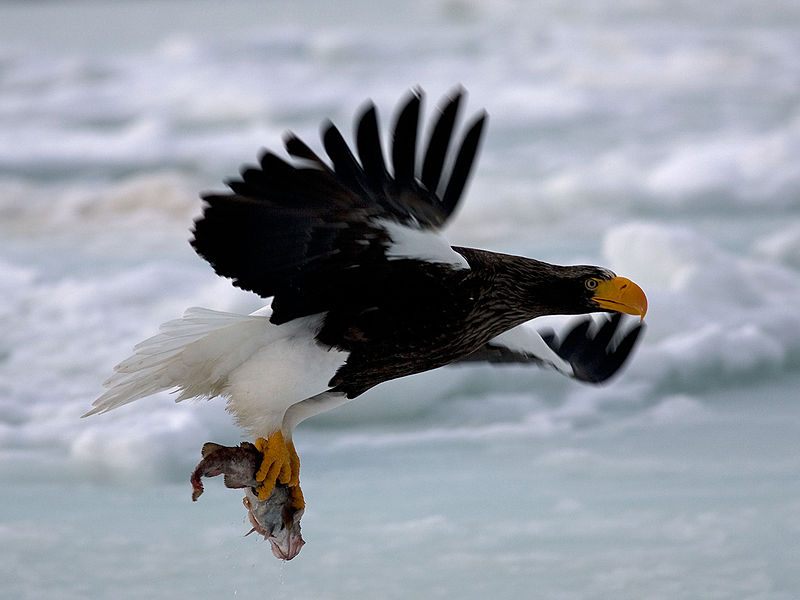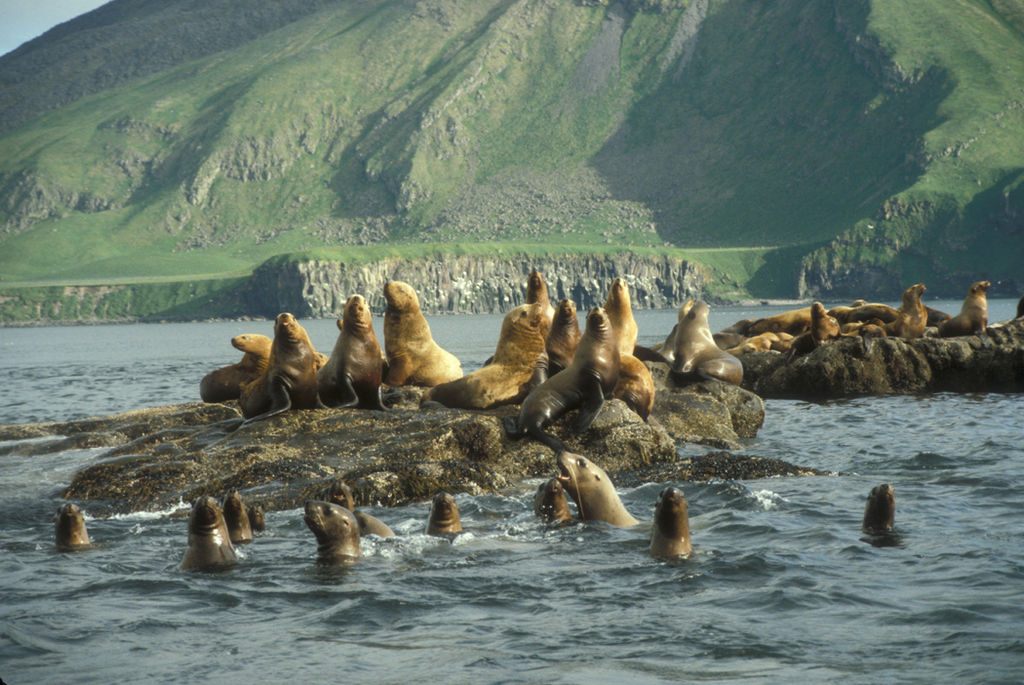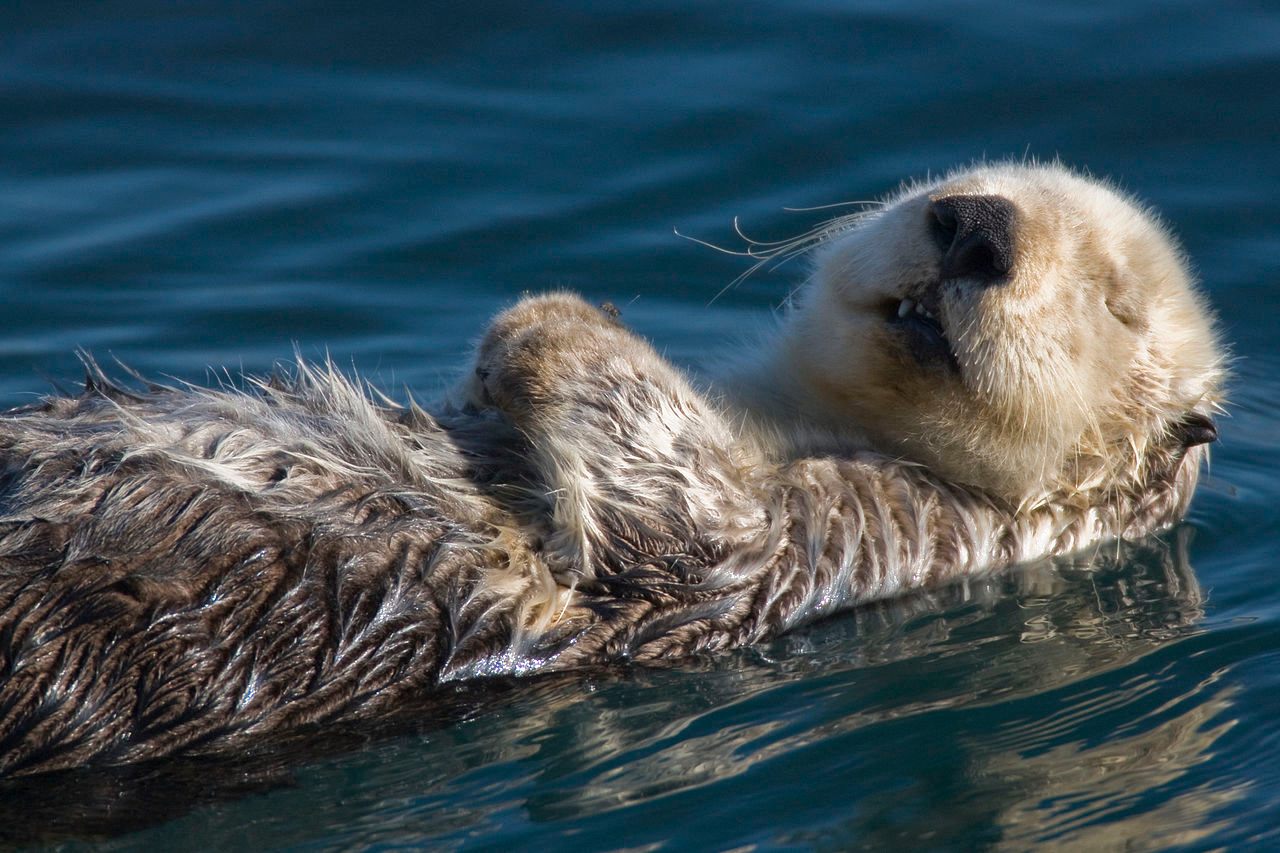Shipwrecks, Scurvy and Sea Otters: The Tale of the First European in Alaska

A 1751 sea otter illustration by Georg Wilhelm Steller. (Drawing and all photos via Wikipedia Commons)
In 1741, Georg Wilhelm Steller became the first European to step foot in Alaska. Marooned there for nearly nine months after his boat ran aground, the German-born naturalist went on to discover several spectacular animals, many of which would be named after him. The list of animals that carry Steller’s name is long and impressive–even more impressive given his incredibly brief career as a naturalist.
Steller’s finds range from arguably the world’s largest eagle to a whale-sized relative of the manatee to the iconic sea otter. Steller was one of the pioneering naturalists of the 18th century, yet his story — equal parts tragedy and dark comedy — is largely unknown. Steller’s life veered from the halls of Bavarian academia to shipwrecks on remote Aleutian islands. He loved animals and was chiefly responsible for one notable extinction. And he mystifies scientists to this day with a detailed description of an animal nobody has ever seen again: Steller’s Sea Ape.
Steller, whose birth name was originally Stöller, was born in 1709, near Nuremberg. Like many naturalists of his era, he was mostly interested in plants, and earned a degree in botany while in university in Berlin. But Steller had no interest in exploring the lush jungles of the tropics. Instead, he moved east, ending up in the Russian army as a surgeon for a brief time. While there, he befriended another naturalist, and when that man died, Steller married his widow, Brigitta.
Soon afterward, in 1741, Steller met Captain Vitus Jonassen Bering, who commanded a ship called the St. Peter, which was chartered for exploration. The St. Peter, along with a sister ship, the St. Paul, were due to traverse what we now think of as the Bering Strait, between Russia and Alaska. Since the ships’ primary duty was discovering new lands, the crew had several naturalists on board, though apparently Steller did not get along with them. The feeling was mutual.
Steller, along with other 18th-century naturalists, like Swedish botanist Carl Linnaeus and Daniel Gottlieb Messerschmidt, the man whose wife Steller married, were part of the new wave, treating exploration less as a lark and more as a serious scientific effort. They adopted a system to carefully describe and categorize all life, from lichens to manatees, which was probably seen at the time as kind of fussy and nerdy and annoying.
In any case, the trip was a disaster. The two ships got separated almost immediately in a storm, though both ended up landing on various parts of what is now Alaska. The St. Paul crashed into one of the Aleutian Islands, but the St. Peter was the first to actually hit mainland Alaska. And guess who stepped out first? Yep, Steller.
The ship’s landing wasn’t pretty. They crashed roughly, and in late summer, which meant the crew had to attempt to survive an Alaskan winter with not much more than the skeleton of their boat. Steller became pretty handy here, and led the hunting and boat reconstruction efforts. The crew attempted to stave off scurvy by eating otter meat, which has a small amount of vitamin C.
When he wasn’t doing that, Steller was practicing what was, at the time, cutting-edge science, in one of the most inhospitable places on earth. Here’s a short list of the animals he discovered:
The Steller’s sea eagle, the world’s heaviest eagle, a spectacularly large bird with a goofily prominent yellow beak that makes it kind of look like a cartoon animal:

The Steller’s sea lion, a sea lion almost as big as a walrus that is now on the near-threatened list:

The Steller’s jay is the West Coast version of the blue jay. This jay is the only one of Steller’s discoveries that isn’t currently either endangered or extinct, and it was actually the evidence Steller had for declaring, correctly, that the St. Peter had made it to the North American mainland. It’s similar to other North American jays, and totally unlike anything in the Old World.

The Steller’s eider, a vivid, noble-looking arctic duck:
The sea otter. Steller was the first to scientifically describe the sea otter! Unfortunately for him, no one today calls it the Steller’s sea otter.

Most disastrously, Steller discovered, described, and named the Steller’s sea cow. Related to manatees and dugongs, the Steller’s sea cow was a gigantic marine mammal. At thirty feet long, it was one of the largest marine mammals to have ever existed in modern history. Sadly, it had no defense against the hungry shipwrecked men of the St. Peter. The Steller’s sea cow ate kelp, but was slow-moving, floating along the surface while it munched, which made it an easy target. Steller wrote that it didn’t taste particularly good, but it had a lot of meat and it seemed as easy to catch as a falling apple. Steller’s reports made it to the next round of Alaskan explorers, who hunted it to extinction within three decades.

Easily the most mysterious of the discoveries is Steller’s sea ape. Steller described, in his usual painstaking way, a marine mammal that seems incredibly strange. In his words, from the English translation of his posthumously published book, De Bestiis Marinis, or Beasts of the Sea:
“The animal was about two ells long. The head was like a dog’s head, the ears pointed and erect, and on the upper and lower lips on both side whiskers hung down which made him look almost like a Chinaman (Editor’s note: he seems to have been referring to the Fu Manchu moustache). The eyes were large. The body was longish, round and fat, but gradually became thinner toward the tail; the skin was covered thickly with hair, gray on the back, reddish white on the belly, but in the water it seemed to be entirely red and cow-colored. The tail, which was equipped with fins, was divided in two parts, the upper fin being two times as long as the lower one, just like on the sharks. However, I was not a little surprised that I could perceive neither forefeet as in marine amphibians nor fins in the place.”
There have been no confirmed sightings of any animal that matches this description, ever. (One sailor, in 1969, claimed to have seen something like it, but no photos were taken.) A 2006 biography from Dean Littlepage suggests that it was a young fur seal, perhaps a bit malformed, but Steller’s description implies a healthy and playful animal. It’s unlikely he made it up, as in the descriptions of mermaids that littered the “scientific” work from that time; Steller was self-serious about his scientific mission. These days, some of the more creative Bigfoot and yeti hunters include Steller’s sea ape in their wheelhouse.
Animal illustration by Georg Wilhelm Steller. (via Wikidi)
Steller and about half of the crew of the St. Peter (not including the captain, Bering, who died in Alaska) survived the winter and managed to build some kind of rat-trap boat out of the scraps of their original ship. They made it back to Russia, where they informed everyone that Alaska, despite being cold and dangerous, had plenty of Steller’s sea cows to eat and plenty of sea otters to hunt for their pelts. Those species promptly went extinct, or very nearly extinct, which likely wasn’t what Steller had in mind.
Regardless, he never made it back to Alaska; he died some four years later in Siberia on his way back to St. Petersburg, an unfairly quiet death for a man who accomplished so much in his mere 37 years on Earth.
NOTE: An earlier version of this story incorrectly attributed Steller’s names to him. In fact, he gave the animals latinate names in accordance with Linnaeus. We regret the error.








Follow us on Twitter to get the latest on the world's hidden wonders.
Like us on Facebook to get the latest on the world's hidden wonders.
Follow us on Twitter Like us on Facebook